Experts Examine the Upcoming Supreme Court Term at 37th Annual Supreme Court Preview
With interest in the upcoming United States Supreme Court term at fever pitch, journalists, litigators, and academics descended upon Williamsburg, Va., to take part in William & Mary Law School’s 37th Supreme Court Preview on September 20-21.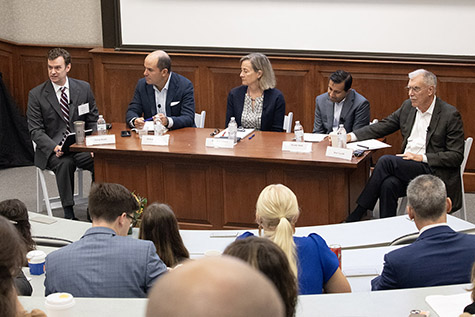
Sponsored by the Law School’s Institute of Bill of Rights Law (IBRL), the Preview featured four federal court of appeals judges, 14 scholars who write about the Court, 17 advocates who have collectively argued more than 500 cases before the Supreme Court, and journalists from the nation’s top newspapers, including the New York Times, Washington Post, USA Today, CNN and the Wall Street Journal.
“Every year I am amazed at how much I learn from the experts assembled at the Preview,” said Allison Orr Larsen, Alfred Wilson & Mary I.W. Lee Professor of Law and Director of the IBRL. “The combination of diverse perspectives (from the bench, the bar, the academy and the Supreme Court beat) really make it a one-of-a-kind event of national prominence, and I am beyond grateful that we get to host it here at William and Mary.”
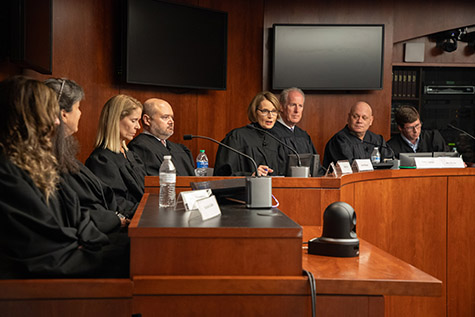 As is customary, the Preview opened with a moot court, this one focusing on United States v. Skrmetti, which will be argued this term. The issue in the case concerns Tennessee’s 2023 law that forbids medical treatments for a minor to treat “distress from a discordance between the minor’s sex and asserted identity.” At issue in this case are puberty blockers and hormone treatments. The law allows the use of hormone treatments for other patients under 18 (not for the use of gender transition or gender dysphoria) and it permits hormone therapy for patients who were already receiving it prior to the law’s enactment.
As is customary, the Preview opened with a moot court, this one focusing on United States v. Skrmetti, which will be argued this term. The issue in the case concerns Tennessee’s 2023 law that forbids medical treatments for a minor to treat “distress from a discordance between the minor’s sex and asserted identity.” At issue in this case are puberty blockers and hormone treatments. The law allows the use of hormone treatments for other patients under 18 (not for the use of gender transition or gender dysphoria) and it permits hormone therapy for patients who were already receiving it prior to the law’s enactment.
The moot court arguments were expertly presented by Jessica Ellsworth, partner at Jenner & Block, and Hashim Mooppan, partner at Jones Day. The mock Supreme Court judges proved to be a hot bench with tricky hypotheticals and case comparisons coming from Joan Biskupic (CNN) as Chief Justice, Jess Bravin (Wall Street Journal), Fred Smith (Emory Law.), Michelle Kallen (Jenner & Block), Jonathan Ellis (McGuireWoods), Robin Rosenbaum (11th Circuit), Pamela Harris (4th Circuit), Richard Sullivan (2nd Circuit) and David Stras (8th Circuit). Their final decision was 5-4 in favor of the petitioner, the challengers to the law. All attendees were reminded that the moot court is an academic exercise only and no questions or positions taken by either the moot court justices or advocates should be attributed to them personally.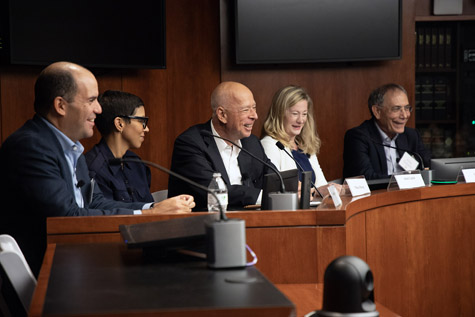
The Friday night programming also featured a panel examining Justice Amy Coney Barrett’s emerging position on the Supreme Court. Moderated by Adam Liptak, Supreme Court Correspondent of the New York Times, panelists Roman Martinez (Latham & Watkins), Melissa Murray (NYU Law), Sarah Harris (Williams & Connolly) and Irv Gornstein (Georgetown Law Center) discussed what (if anything) has changed for Justice Barrett’s positions, and they forecast what her emerging voice means for the Court’s direction in the future.
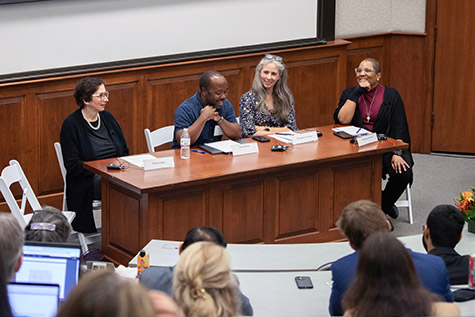 The Preview continued on Saturday, with panels and breakout sessions throughout the day. One panel, “Admin Law After the Storm: The Fallout from Loper Bright and more,” saw experts examining whether or not the Court will have more big moves in store for the administrative state this term, and what is most likely to take place in the lower courts in the wake of these major decisions.
The Preview continued on Saturday, with panels and breakout sessions throughout the day. One panel, “Admin Law After the Storm: The Fallout from Loper Bright and more,” saw experts examining whether or not the Court will have more big moves in store for the administrative state this term, and what is most likely to take place in the lower courts in the wake of these major decisions.
Another panel, “Emerging Technologies, Fraud, and the First Amendment,” discussed how the Court will address such emerging technologies as cryptocurrency, social media, age restrictions on website content, data mining and more, and what if any patterns can be drawn from cases that press the Court to understand regulations on changing technologies.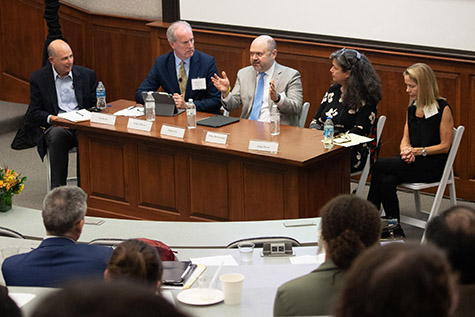
In what has become an annual highlight of the event a panel of judges on the U.S. Courts of Appeals participated in a conversation with Professor Neal Devins. This year they discussed “How to Manage Legal Transition,” including changes in the test governing Second Amendment challenges. The judges discussed what are the most direct and practical consequences in the courts below from big changes in the law, and they even talked about what would make managing those transitions easier.
The Preview began its busy afternoon with Docket Deep Dives, including panels on Election Law, Business and Employment Law, and Criminal Law.
 Another panel “Deciding Not to Decide: Standing Doctrine, “DIG”s, & the Shrinking Docket.” looked at several of last term’s high-profile decisions that were not decided on the merits, either because the case was dismissed for lack of standing or dismissed as improvidently granted cases the Court dismissed. The experts discussed potential reasons for that pattern and predicted whether it will continue into the coming term. The panelists also speculate on why the Supreme Court is deciding fewer cases than ever, and what the consequences of a shrinking docket may be (for both the merits docket and the shadow docket).
Another panel “Deciding Not to Decide: Standing Doctrine, “DIG”s, & the Shrinking Docket.” looked at several of last term’s high-profile decisions that were not decided on the merits, either because the case was dismissed for lack of standing or dismissed as improvidently granted cases the Court dismissed. The experts discussed potential reasons for that pattern and predicted whether it will continue into the coming term. The panelists also speculate on why the Supreme Court is deciding fewer cases than ever, and what the consequences of a shrinking docket may be (for both the merits docket and the shadow docket).
And finally, a panel, “What’s Next for the Second Amendment?” discussed the fall-out from Rahimi, the Supreme Court’s latest Second Amendment decision (argued in the 2023 Preview Moot Court), and then speculated what Rahimi means for the next installment of Second Amendment challenges.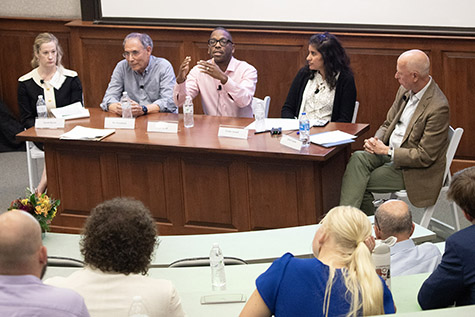
The Preview is designed so that a general audience may learn more about the workings of the Supreme Court, but law students especially benefit as experts make themselves available for classes and networking. Professor Pamela S. Karlan, from Stanford Law School, held a morning chat with students before delivering the Law School’s annual Constitution Day Lecture. And an afternoon “Greenroom with Students” saw available panelists meet with registered William & Mary students to talk about their lives in the law and to give advice they wish they had been given when in law school.
“The Supreme Court Preview is my favorite Law School event to attend every year because it presents the unique opportunity to hear from and speak with U.S. Courts of Appeals judges, Supreme Court advocates, journalists who cover the Court, and leading legal scholars,” said Lauren Miller ’25. “The highlight of the weekend for me was getting to bailiff the moot court of United States v. Skrmetti. I also really enjoyed hearing how judges conceptualize their role and work through cases during the ‘How to Manage Legal Transition’ judges panel.”
Visit our Gallery page for more about the 2024 Supreme Court Preview.